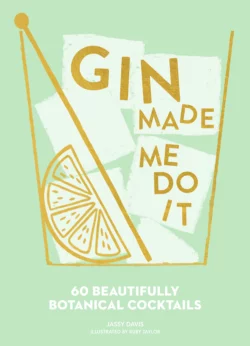Gin Made Me Do It: 60 Beautifully Botanical Cocktails

Ruby Taylor и Jassy Davis
Тип: электронная книга
Жанр: Кулинария
Язык: на английском языке
Стоимость: 463.47 ₽
Статус: В продаже
Издательство: HarperCollins
Дата публикации: 16.04.2024
Отзывы: Пока нет Добавить отзыв
О книге: 2016 was officially the “year of gin” in the UK, with sales topping £1 billion! The brilliantly botanical spirit is much more than tonic’s sidekick, it’s sophisticatedly sippable, and adds depth and flavour to any drink.This beautifully illustrated book will introduce you to a host of cocktails from the classic to the cutting edge, and showcase the versatile potential of gin.In Gin Made Me Do It, gin aficionado and cocktail maven Jassy Davis explains everything you need to know: how to choose the perfect blend, mix the ultimate martini, and deliver delicious cocktails for every occasion.From the perfect G&T and updates on classics like the Aviator and the Vesper, to a wide range of herbaceous cocktails, the recipes in this book are fresh, flavourful, and fun. 60 delicious recipes are illustrated with bright and beautiful original artwork in a book that makes a lovely gift for your friends—or yourself!